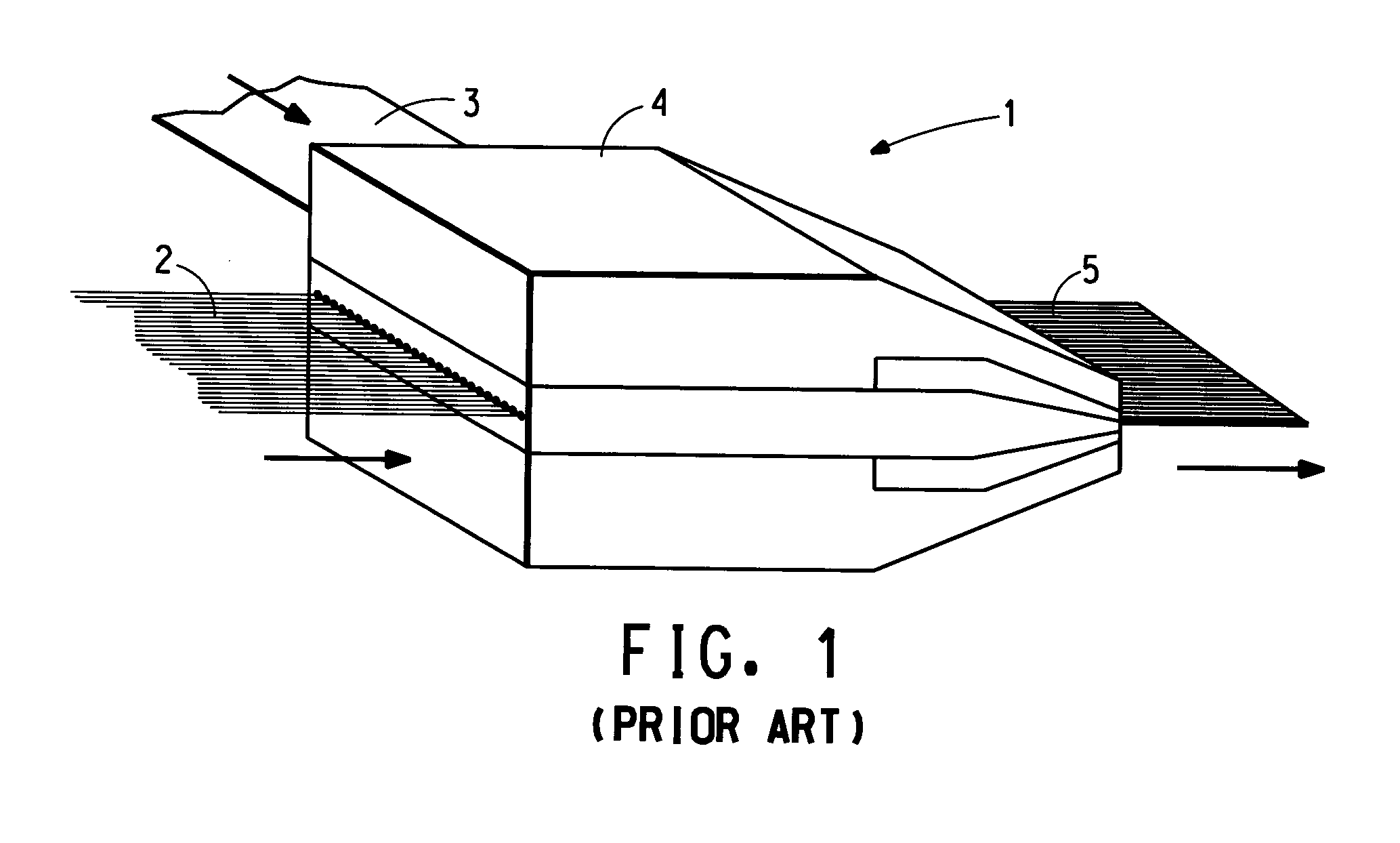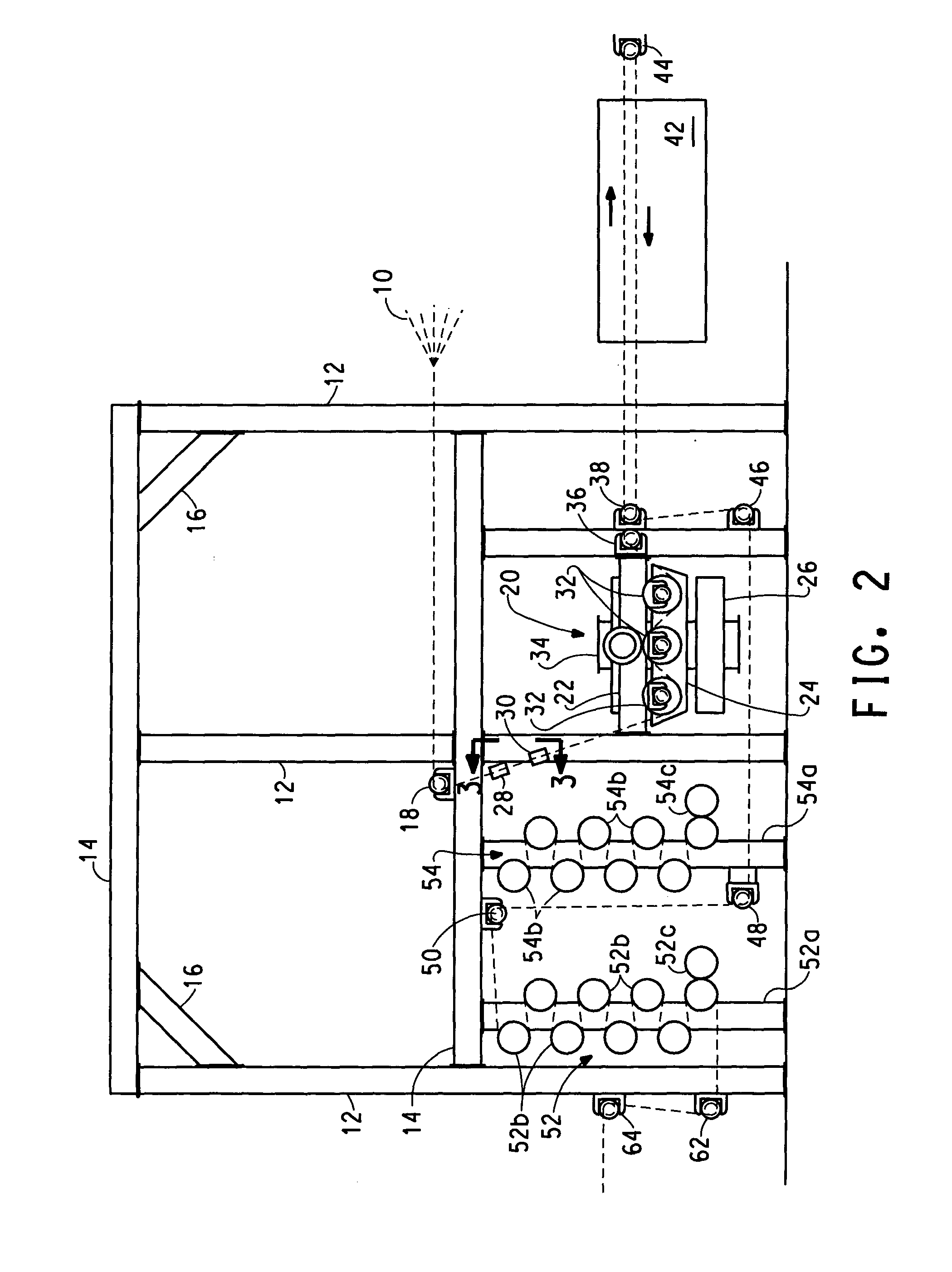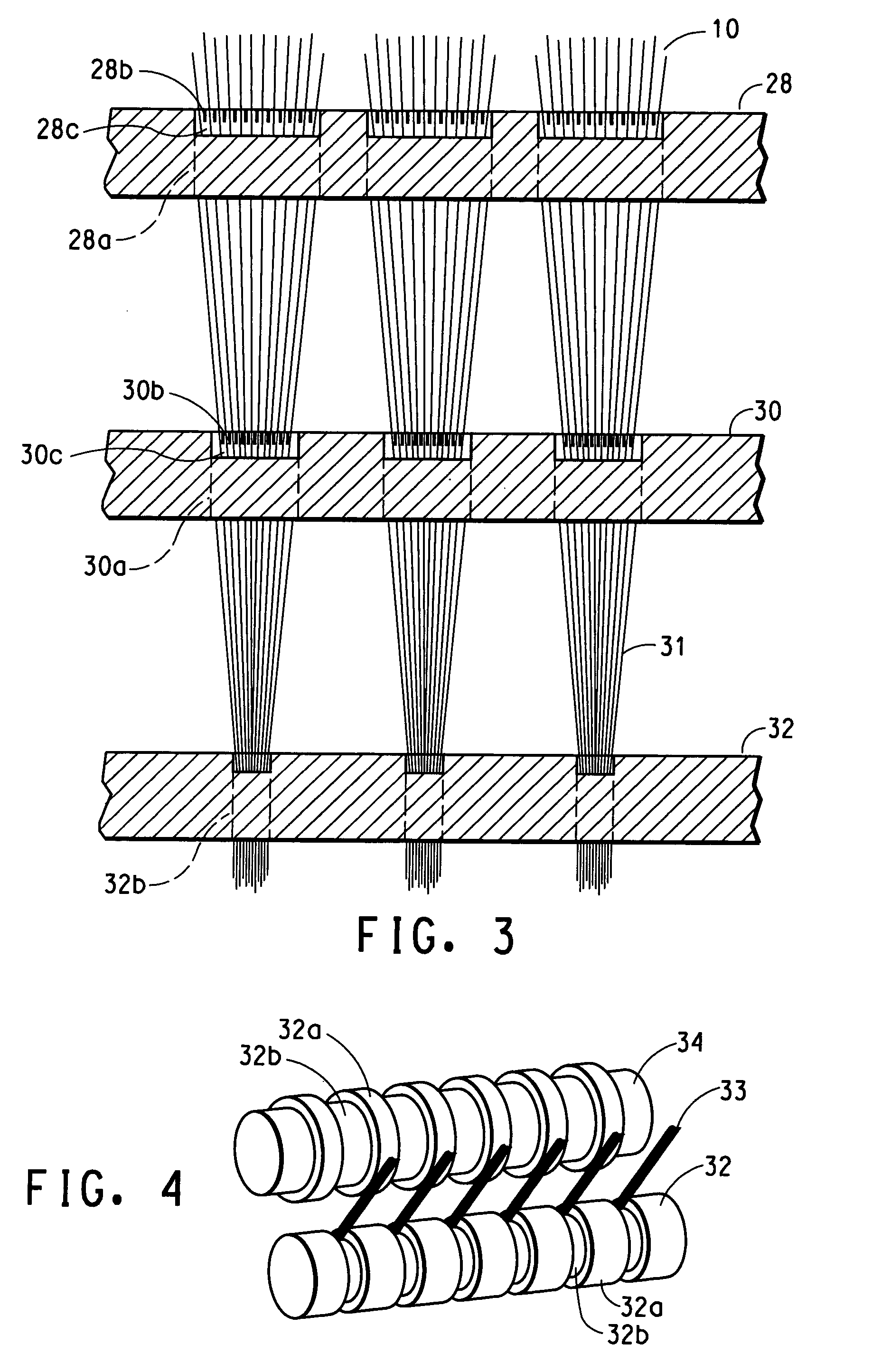Apparatus and process for making a tape useful as a tire cap ply
- Summary
- Abstract
- Description
- Claims
- Application Information
AI Technical Summary
Benefits of technology
Problems solved by technology
Method used
Image
Examples
example
[0036] A tape may be made using the apparatus of FIG. 2 from a plurality of single end cords, such as T-728, commercially available from DUSA, International. The cords may then be sent to a dip pan, where an rfl dip, may be applied. This dip may be made by adding water, sodium hydroxide (NaOH), or caustic pellets, resourcinol flake and formaldehyde to a tank, to form a sollution with a solids content of about 6%. The solution should be mixed for approximately 30 minutes. This solution may then aged for a minimum of about 3 hours (minimum of 2 hours, maximum of 4 hours). In another tank, a latex may be added. Then water may be mixed with ammonium hydroxide, NH4OH, and added to the latex slowly.
[0037] Then an anti-foaming agent may be added to form a solution, which should be mixed slowly. This solution may have a solids content of about 35%. This solution may then combined with the solution from the first tank. The combined solutions should be mixed together for about 30 minutes pri...
PUM
| Property | Measurement | Unit |
|---|---|---|
| Fraction | aaaaa | aaaaa |
| Percent by mass | aaaaa | aaaaa |
| Weight | aaaaa | aaaaa |
Abstract
Description
Claims
Application Information
 Login to View More
Login to View More - R&D
- Intellectual Property
- Life Sciences
- Materials
- Tech Scout
- Unparalleled Data Quality
- Higher Quality Content
- 60% Fewer Hallucinations
Browse by: Latest US Patents, China's latest patents, Technical Efficacy Thesaurus, Application Domain, Technology Topic, Popular Technical Reports.
© 2025 PatSnap. All rights reserved.Legal|Privacy policy|Modern Slavery Act Transparency Statement|Sitemap|About US| Contact US: help@patsnap.com



